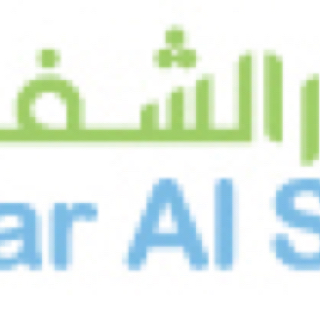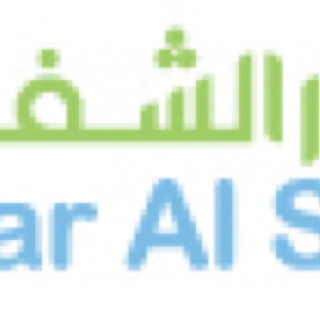Information
-
Document No.
-
Audit Title
-
Client / Site
-
Conducted on
-
Prepared by
-
Location
-
Personnel
-
Previous Inspection
-
Has the last inspection been reviewed?
-
Details
Managers - Infection Control performed an inspection of your unit. Please review your survey and document your Plan of Correction next to each deficiency.
1.0. Receiving
-
1.1. Personnel wearing PPE while transporting items from the point of use to the decontamination area?
-
1.2. Item that does not pass this inspection is reprocessed and then inspected again?
-
1.3. Gross residual soil removed as close to the point of use prior to return to CSSD?
-
1.4. Collection containers puncture resistant and leak proof?
-
1.5. Is the container/ trolley cleaned at the end of each collection round?
-
1.6. Use automated cleaning equipment (ultrasonic cleaner or washer disinfector) to remove debris to improve cleaning effectiveness?
-
1.7. Wearing puncture and chemical/resistant/heavy duty utility gloves for decontamination procedures?
-
1.8. PPE worn?
2.0. Packaging and wrapping of items prior to sterilisation
-
2.1. Combinations of hollowware, instruments, dressings, drapes or tubing are not incorporated into a single pack?
-
2.3. Packs have been validated to ensure efficiency of air elimination so that the sterilising agent can penetrate the load?
-
2.4. All packs are labelled prior to sterilization?
-
2.5. Each package labelled with batch control information: sterilizer identification number / date of sterilization / cycle or load number?
-
2.6. The colour change of the sterilising indicator tape following exposure is distinct and uniform and markedly different to the unprocessed tape?
-
2.7. Cleaning agents or other chemicals are not allowed to come in direct contact with personnel?
-
2.8. Abrasive cleaners, steel wool, powders and paste are not used?
-
2.9. Material Safety Data Sheets have been obtained and read prior to introduction of chemicals?
-
2.10. Common household detergents are not used?
-
2.11. Cleaning equipment is thermally disinfected or sterilized at the end of each session. It is stored dry and clean?
-
2.11. The functions of the washer disinfector and the detergent dispenser are checked daily and documented?
-
2.12. Is the batch washer final rinse between 80c and 90c?
-
2.13. Tubing and other items with lumens are placed over appropriate connectors in drying cabinets to ensure hot air dries all surfaces?
-
2.14. The drying cabinet operates between 65c and 75c?
3.0. Maintenance of Sterilizers and Associated Equipment.
-
3.1. Daily the floor of the sterilizer is checked and free of debris, chamber drain and filters are clearness, recording devices are functioning correctly and the door gasket is undamaged?
-
3.2. The loading trolley and external surfaces of the steriliser are cleaned daily?
-
3.3. Every package has an external chemical indicator?
-
3.4. Performance requalification is performed at least annually and whenever there is a change made to sterilizer load configuration?
-
3.5. All associated equipment used to process sterile items has established, documented and validated processes in place?
-
3.6. Biological indicator incubators are checked?
-
3.7. Washer machine have documented daily performance testing?
-
3.8. Washer machine have annual electrical safety checks performed and documented?
4.0. Quality Management
-
4.1. The person in charge of the processing facility has specific qualifications and experience in sterilizing technology?
-
4.2. Records are maintained in a designated storage area for a period of time not less than defined by regulatory authorities?
-
4.3. Sterile supplies are handled and stored in a manner that maintains integrity and prevents contamination from any source?
-
4.4. Each item intended for use as a sterile item has a label with batch control identification which indicates sterilizer, date of sterilization and cycle or load number?
-
4.5. All sterilising records are maintained and include date of cycle, steriliser number, cycle number, exposure time temperature and pressure, identification of the loading operator, identification of the person authorising release of the load,the specific contents of the load and the results of physical, chemical and biological tests used.
-
4.6. Maintenance records are stored in a designated area with other records?
-
4.7. The chemical indicator 'sterilizing tape' are examined after sterilization to ensure colour change indicating items have been exposed to a sterilization process?
-
4.8. All items to be processed have external chemical indicators on them?
-
4.9. There is written information from the biological/enzymatic indicator supplier on the storage, handling, use, microbial testing and correct incubation processes!
-
4.10. Staff are immunized as per immunisation guidelines and records are kept including refusals?
-
4.11.Staff wear clean attire for the duration of the shift?
-
4.12. All hair is secured and covered whilst preparing items for sterilization?
-
4.13. Staff able to demonstrate good handwashing techniques?
-
4.14. The working environment is maintained in a hygienic state at all times?
5.0. Storage and Handling of Sterile Stock
-
5.1. Has documented policies and procedures for storage, handling and issuing of sterile stock?
-
5.2. Critical medical items, which are stored unwrapped are subjected to the full cleaning process and sterilised before being used?
-
5.3. There is a dedicated sterile storage area, which is controlled to prevent contamination?
-
5.4. The storage area is free of dust?
-
5.5. All items are stored above floor level by at least 250mm?
-
5.6. All items are stored at least 440 mm from ceiling?
-
5.7. All stock is protected by direct sunlight?
-
5.8. Storage containers, trolleys and cupboards are clean, dry and in good condition?
-
5.9. All surfaces including walls, floors and ceiling lights are easy to clean, non porous and smooth?
-
5.10. Access to the sterile store is restricted to those who have been trained in handling of sterile items, do not have any skin disorders and have applied hand hygiene on entry?
6.0.
-
6.1. Hand sanitizer is available and accessible?
-
6.2. Available liquid soap and wall mounted paper towels available near each sink?
-
6.3. Free from bar soaps?
-
6.4. Posters in appropriate locations demonstrating good handwashing techniques?
-
6.5. Clinical staff able to demonstrate good handwashing techniques?
-
6.6. Staff able to apply 5 moments of hand hygiene?
7.0. Waste management
-
7.1. Waste containers clean, operational and in good condition?
-
7.2. Waste containers covered and with labels?
-
7.3. Waste clearly segregated?
-
7.4. Sharp containers secured and labeled appropriately?
-
7.5. Sharp bins not mixed with any general/biomedical waste?
Additional Comments
Recommendations
-
Inspector's signature
-
Received by:







